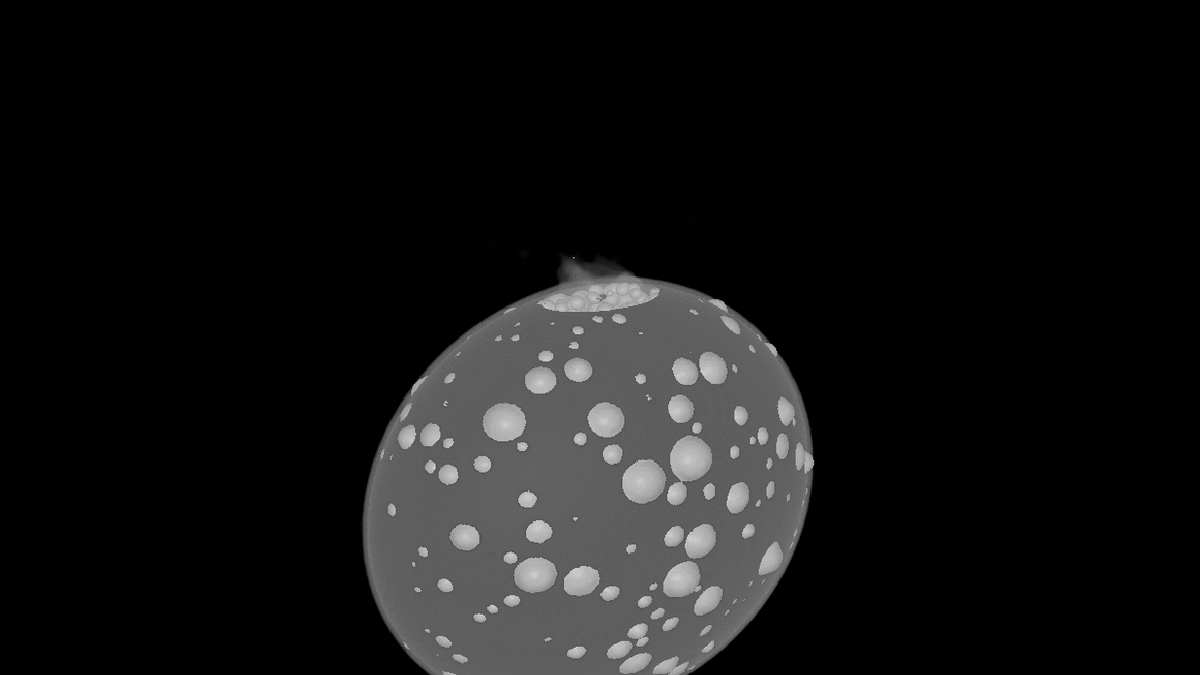In September 2022, a NASA spacecraft smashed into a tiny asteroid to nudge it off its orbital course. The mission was a success in testing an asteroid deflection method that may come in handy one day, but rather than leaving behind an impact crater, the orbital collision changed the shape of the target asteroid altogether, revealing its fungible composition.
A team of researchers simulated the impact of NASA’s Double Asteroid Redirection Test, or DART, to reveal how it likely transformed Dimorphos, a 558-foot-wide (170-meter) space rock that orbits its larger 2,625-foot-wide (800-meter) companion, Didymos. In a new study published in Nature Astronomy, the simulations show that the impact led to significant reshaping and resurfacing of the asteroid Dimorphos.
“Our simulations revealed that Dimorphos is probably a rubble-pile asteroid,” Sabina Raducan, a planetary scientist at the University of Bern, Switzerland, and lead author of the study, told Gizmodo in an email. “Before DART’s arrival at Dimorphos, we didn’t know what to expect because the system is so far away from Earth.”
NASA’s 1,340-pound spacecraft smashed into the moonlet on September 26, 2022, following a 10 month journey to the binary asteroid system. Datasets gathered by ground-based optical and radio telescopes show that, following the collision, Dimorphos’s orbital period around Didymos shortened from 11 hours and 55 minutes to 11 hours and 23 minutes.
Using the Bern Smoothed Particle Hydrodynamics (SPH) impact code, the team ran through 250 simulations to reproduce the asteroid’s first two hours after impact. The scientists estimate that 1% of the entire mass of Dimorphos was chucked into space after it was impacted by the DART spacecraft and around 8% of its mass was shifted around its body.
The results not only show what may have happened to the asteroid after the spacecraft rammed into it, but also the composition of Dimorphos itself. The study indicates that the asteroid is a rubble pile that’s held together by its weak gravity rather than cohesive strength. Therefore, DART’s impact created a much wider cone-shaped ejecta, or plume, of material that extended by up to 160 degrees, and kept on expanding after the impact due to the weak gravity holding the asteroid together and its low material cohesion.
The study findings also suggest that the small asteroid Dimorphos likely formed from material that was shed by Didymos, which was re-accumulated and gravitationally bound to orbit the larger asteroid like a tiny moon. “These findings offer clues about the prevalence and characteristics of similar binary systems in our solar system, contributing to our broader understanding of their formation histories and evolution,” Raducan said.
The European Space Agency (ESA) is planning a follow-up mission to the binary pair of space rocks to get a closer look at the changes made to Dimorphos following its encounter with DART. ESA is scheduled to launch its Hera mission in 2024, which will rendezvous with Didymos and its moon by 2026.
Follow-up observations could offer clues as to how asteroids form and help better inform asteroid deflection methods to prepare for a possible Earth collision.
“The implication for planetary defense is that small, rubble-pile asteroids, like Dimorphos, are very efficient to deflect and the kinetic impactor technique would be an appropriate deflection mechanism,” Raducan said. “However, before attempting deflection, a reconnaissance mission would likely be necessary to accurately assess the asteroid’s properties.”
For more spaceflight in your life, follow us on X (formerly Twitter) and bookmark Gizmodo’s dedicated Spaceflight page.

Dr. Sarah Adams is a scientist and science communicator who makes complex topics accessible to all. Her articles explore breakthroughs in various scientific disciplines, from space exploration to cutting-edge research.





